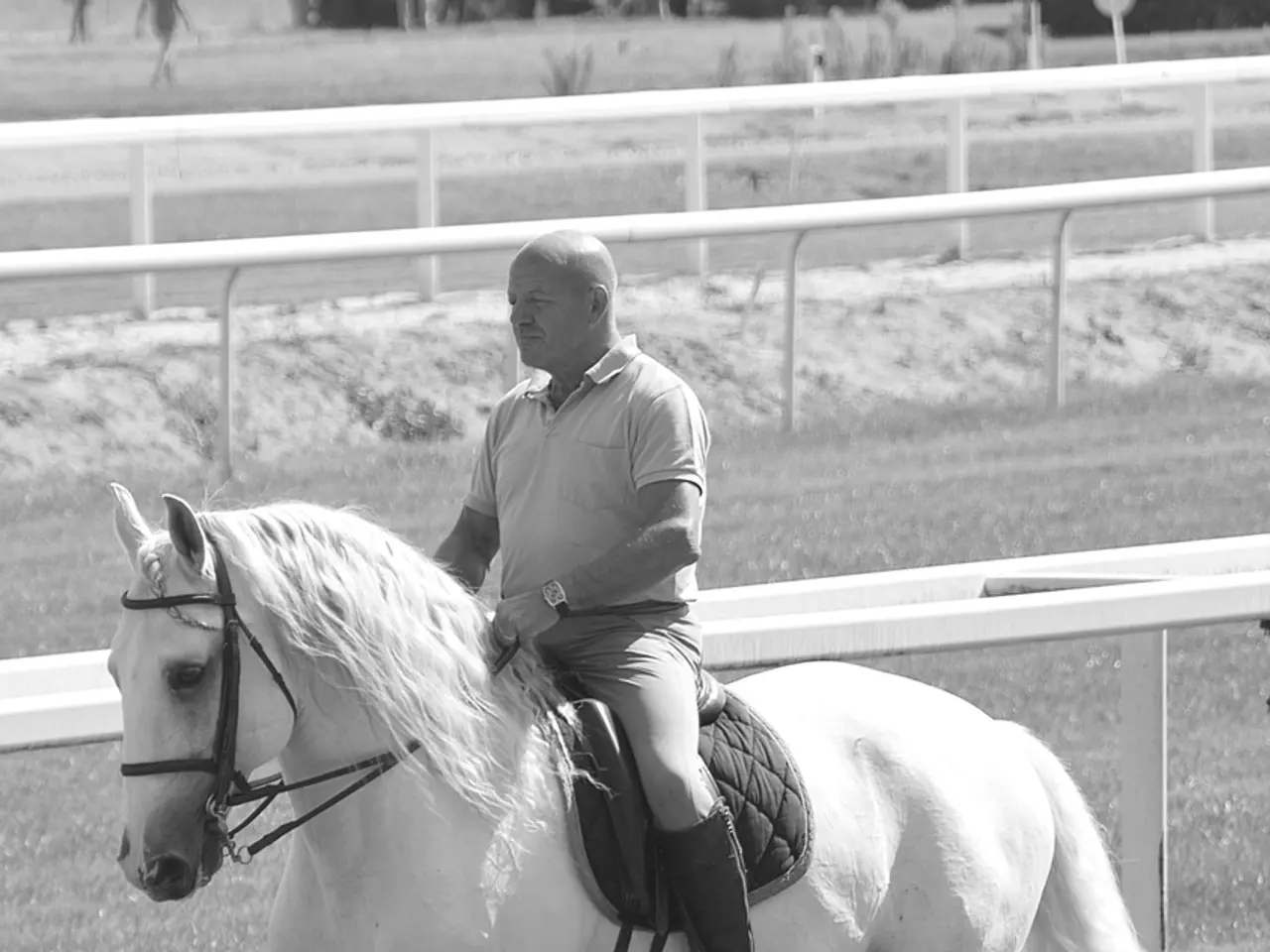Guidance on Managing Equine Cribbing Behavior
Cribbing, a stereotypy characterized by grabbing an upright object with the teeth, arching the neck, and sucking air, is a behaviour commonly observed in horses. While it has not been reported in free-ranging feral horses, it is a concern for many horse owners in domesticated settings.
Research into cribbing has shed light on various factors that may contribute to its development. Studies published in the Equine Veterinary Journal, Applied Animal Behaviour Science, and The Veterinary Journal have explored the roles of diet, genetics, boredom, stress, and copying another horse. For instance, feeding concentrate to young horses immediately after weaning is associated with a four-fold increase in the manifestation of cribbing. Conversely, increased roughage in the diet has been associated with a decreased risk.
The exact cause of cribbing remains to be determined, but it is believed to be related to management, nutrition, and genetics. Diet can play a significant role, with horses that have more grain in their diet having an increased risk of developing stereotypies, while increased roughage can reduce this risk. The type of grain can also impact cribbing, as horses cribbed more when fed sweet feed than oats.
Cribbers have atypical hormone levels compared to non-cribbing horses, and they may make more use of sweetened licks than non-cribbers. Cribbing is also a risk factor for conditions such as colic, stomach ulcers, equine motor neuron disease, and temporohyoid osteoarthropathy.
Preventing the onset of cribbing behaviour can be challenging due to the unknown cause. However, certain strategies can help reduce the chances of a horse becoming a cribber. Consider not breeding to a horse that cribs, providing plenty of forage at weaning, and allowing horses plenty of turnout and interaction with other horses.
The cribbing collar is the most used method to prevent cribbing. These collars are effective in preventing cribbing in most horses but are only effective when the horse is wearing the collar. Other methods of preventing cribbing that require intensive management include elimination of cribbing surfaces, taste deterrents, electrification of cribbing surfaces, pharmaceuticals, oral antacids for foals, surgery, and increasing the time spent eating.
It's important to note that cribbing is likely a permanent behaviour pattern once established. However, cribbing rates are reduced when cribbers have access to turnout and socialization.
The article was originally published in 2015 through SDSU Extension (iGrow) and updated for an Ohio audience in 2020. While the cause for the development of cribbing remains elusive, understanding its potential causes and implementing preventative strategies can help horse owners maintain the health and wellbeing of their equine companions.








